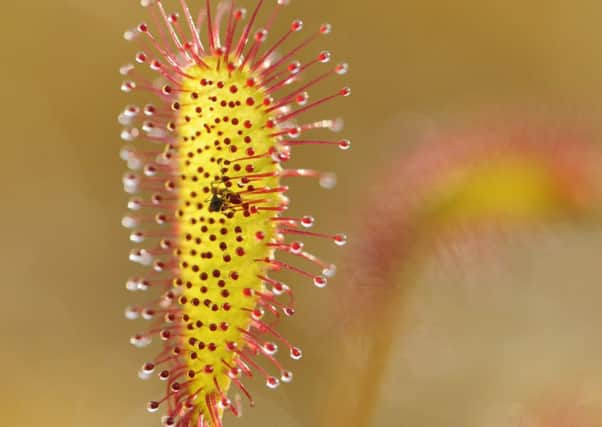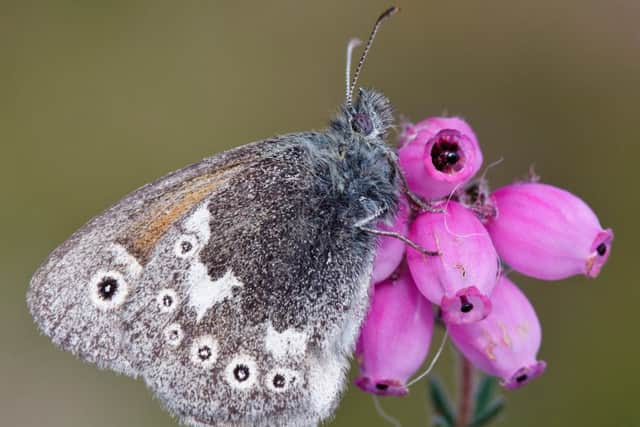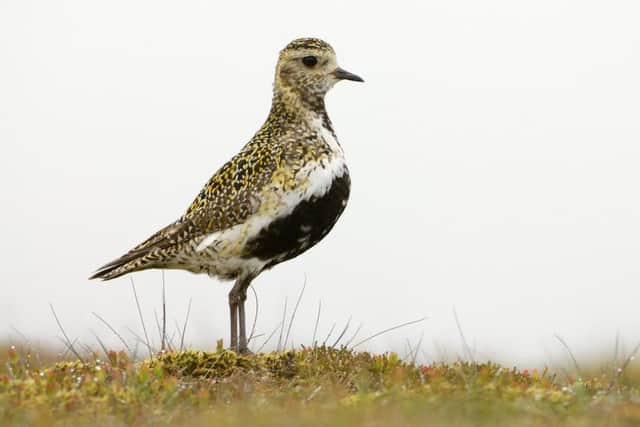Rare species rely on rescue plan for precious peatlands


Nearly a quarter of the country’s entire landmass is covered in peaty soils, stretching across approximately 1.8 million hectares – including around 13 per cent of the world’s blanket bog.
When in good condition, the bogs provide multiple benefits for people and wildlife.
Advertisement
Hide AdAdvertisement
Hide AdThe conservation charity Plantlife takes care of nearly 2,000 hectares of peatland at its Munsary nature reserve, near Lybster, in the famous Flow Country of Caithness and Sutherland.


“Peat really is a super-habitat,” said Alistair Whyte, head of Plantlife Scotland.
“Not only is it packed full of amazing species, it also keeps the planet healthy by locking up carbon.
“When they’re intact, bogs also help protect us from flooding by acting like giant sponges, soaking up water which would otherwise cause huge problems downstream.”
As well as supporting a wide diversity of specially adapted plants and animals, their soggy nature means peat bogs provide a year-round water supply for livestock and wildlife, even during drought conditions, and can help stop the spread of wildfires.


They also soak up heavy rainfall, helping guard against flooding, and slow the flow of rivers. This lessens the amount of peat washed downstream, where its acidity can affect drinking water and aquatic life.
As a major active store for carbon, peatlands are also crucial in the battle to control climate change.
It’s estimated that 1.7 billion tonnes of carbon – equivalent to 140 years of Scotland’s total annual greenhouse gas emissions – is locked up in peat.
Advertisement
Hide AdAdvertisement
Hide AdBut the bad news is most of Scotland’s peatlands – around 80 per cent – are thought to be damaged to some extent.
Degradation has been caused by several factors, including drainage for agriculture and forestry, overgrazing, burning and extraction for fuel and compost. And since peat forms very slowly, the habitat takes many years to recover.
Scottish Natural Heritage (SNH) is leading the national Peatland Action project, which is working to revive the bogs through measures such as rewetting and scrub removal.
The project is funded by the Scottish Government as part of a goal to restore 250,000 hectares of peatland by 2030.
More than 20,000 hectares have already been brought back to health since early 2013.
Andrew McBride, project manager for Peatland Action, says restoration work is progressing well but there is a long road ahead.
He said: “What we’re doing is putting right things that were done a long time ago. The damage could have happened 40, 50 or 150 years ago, but the land then deteriorates as time goes on.
“From a biodiversity point of view, when peatlands are functioning properly they host a huge array of life. They support lots of insects and plants at the bottom of the food chain, which go on to feed birds and animals.”
Advertisement
Hide AdAdvertisement
Hide AdThe recent United Nations Environment Assembly, held in Nairobi, Kenya, has this week adopted its first ever resolution on peatlands.
It urges member states and other stakeholders “to give greater emphasis to the conservation, sustainable management and restoration of peatlands worldwide”.
ON THE WANTED LIST
1 Bog bean – iconic, recognisable, once used to flavour beer.
2 Curlew – the iconic wader has suffered such serious declines it is named a conservation priority.
3 Marsh saxifrage – very rare, found at seven Scottish sites including Munsary.
4 Sundew – a carnivorous plant that feasts on insects, which they trap and then slowly digest.
5 Northern cranberry – berries from this plant used to be harvested from the wild, but it has become so rare due to habitat loss that this is no longer possible.
6 Bog sun jumper spider – this tiny jumping spider is found only on raised bogs at five sites in Scotland and one in Wales.
Advertisement
Hide AdAdvertisement
Hide Ad7 Bog orchid – drainage of bogs, particularly in lowlands, has caused steep decline of this species.
8 Golden plover – another wader that is under threat due to habitat loss and impacts of climate change.
9 Large heath butterfly – still widespread in Scotland, this eye-catching creature relies on hare’s tail cottongrass for sustenance.
10 Cloudberry – this peat-loving species has a distinctive but rarely seen orange fruit.